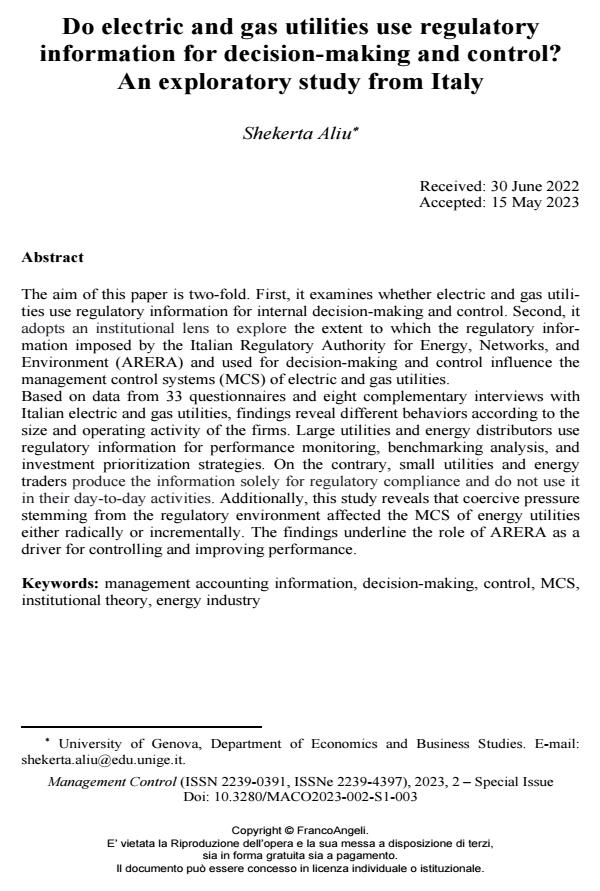Do electric and gas utilities use regulatory information for decision-making and control? An exploratory study from Italy
Journal title MANAGEMENT CONTROL
Author/s Shekerta Aliu
Publishing Year 2023 Issue 2023/2 Suppl.
Language English Pages 28 P. 37-64 File size 269 KB
DOI 10.3280/MACO2023-002-S1003
DOI is like a bar code for intellectual property: to have more infomation
click here

FrancoAngeli is member of Publishers International Linking Association, Inc (PILA), a not-for-profit association which run the CrossRef service enabling links to and from online scholarly content.
The aim of this paper is two-fold. First, it examines whether electric and gas utilities use regulatory information for internal decision-making and control. Second, it adopts an institutional lens to explore the extent to which the regulatory infor-mation imposed by the Italian Regulatory Authority for Energy, Networks, and Environment (ARERA) and used for decision-making and control influence the management control systems (MCS) of electric and gas utilities. Based on data from 33 questionnaires and eight complementary interviews with Italian electric and gas utilities, findings reveal different behaviors according to the size and operating activity of the firms. Large utilities and energy distributors use regulatory information for performance monitoring, benchmarking analysis, and investment prioritization strategies. On the contrary, small utilities and energy trad-ers produce the information solely for regulatory compliance and do not use it in their day-to-day activities. Additionally, this study reveals that coercive pressure stemming from the regulatory environment affected the MCS of energy utilities either radically or incrementally. The findings underline the role of ARERA as a driver for controlling and improving performance.
Keywords: management accounting information, decision-making, control, MCS, institutional theory, energy industry
Shekerta Aliu, Do electric and gas utilities use regulatory information for decision-making and control? An exploratory study from Italy in "MANAGEMENT CONTROL" 2 Suppl./2023, pp 37-64, DOI: 10.3280/MACO2023-002-S1003